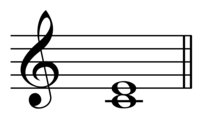Musical tuning

Musical tuning is like making sure you have the right key to open the door. Just like how we need a key to unlock our doors, musical instruments need to be tuned to produce the right sound.
When we play a musical instrument, we make the strings or the air in the instrument vibrate, and this vibration produces sound. But if the strings or the air are not in the right condition, we might produce something that doesn't sound good.
This is where tuning comes in! There are different ways to tune an instrument, but the most common way is to use a tuning fork. A tuning fork is a small, metal tool that makes a pure and clear sound when you hit it against a hard surface.
What we do is, we first match the pitch of the tuning fork to a specific note on the instrument. For example, let's say we want to tune a guitar. We take a tuning fork and hit it against a hard surface, which makes it vibrate and produce a sound. Then we place the tuning fork on the guitar's body to transfer its vibrations, which makes the guitar strings vibrate at the same frequency as the tuning fork.
We then adjust the tension of the guitar strings until they produce the same frequency as that of the tuning fork. Once we get the right frequency, we know that the guitar is in tune, and it will produce the right sound when we play it.
In summary, tuning an instrument is like making sure you have the right key to unlock a door. A tuning fork helps us find the right frequency, and we adjust the instrument to match that frequency so that we can produce the right sound when we play it.
When we play a musical instrument, we make the strings or the air in the instrument vibrate, and this vibration produces sound. But if the strings or the air are not in the right condition, we might produce something that doesn't sound good.
This is where tuning comes in! There are different ways to tune an instrument, but the most common way is to use a tuning fork. A tuning fork is a small, metal tool that makes a pure and clear sound when you hit it against a hard surface.
What we do is, we first match the pitch of the tuning fork to a specific note on the instrument. For example, let's say we want to tune a guitar. We take a tuning fork and hit it against a hard surface, which makes it vibrate and produce a sound. Then we place the tuning fork on the guitar's body to transfer its vibrations, which makes the guitar strings vibrate at the same frequency as the tuning fork.
We then adjust the tension of the guitar strings until they produce the same frequency as that of the tuning fork. Once we get the right frequency, we know that the guitar is in tune, and it will produce the right sound when we play it.
In summary, tuning an instrument is like making sure you have the right key to unlock a door. A tuning fork helps us find the right frequency, and we adjust the instrument to match that frequency so that we can produce the right sound when we play it.
Related topics others have asked about:
